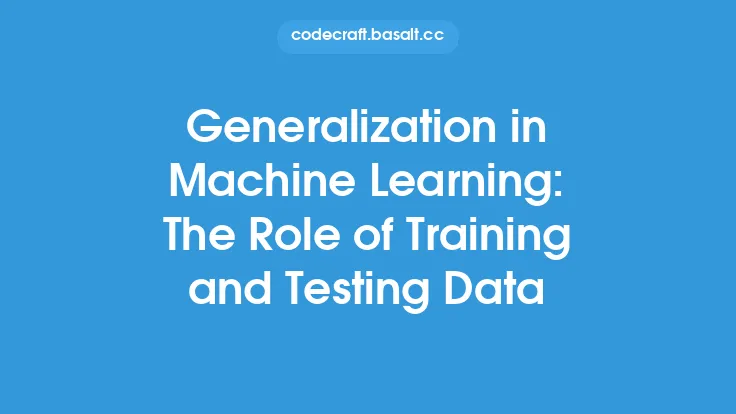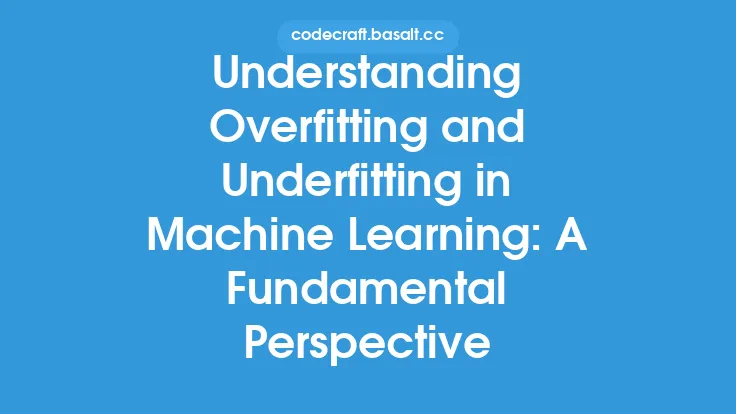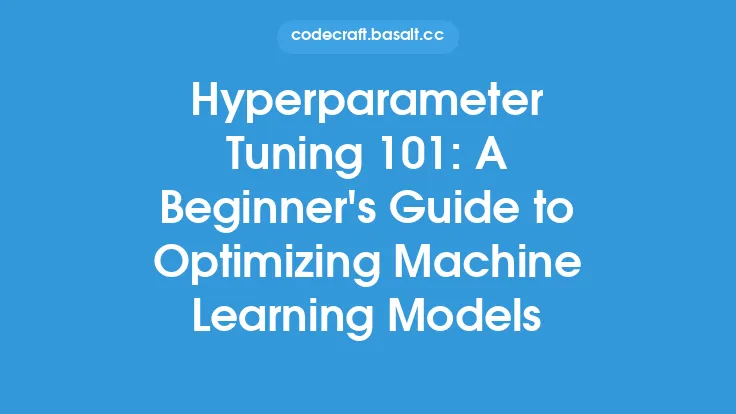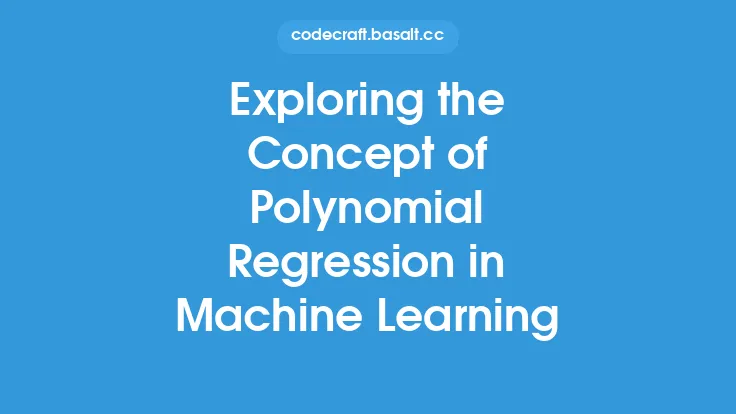Machine learning models are designed to learn from data and make predictions or decisions based on that data. However, the performance of these models can be affected by two fundamental issues: overfitting and underfitting. Overfitting occurs when a model is too complex and learns the noise in the training data, resulting in poor generalization to new, unseen data. Underfitting, on the other hand, occurs when a model is too simple and fails to capture the underlying patterns in the data. The key to avoiding these issues is to find the right balance between model capacity and complexity.
Introduction to Model Capacity
Model capacity refers to the ability of a model to fit the training data. A model with high capacity can fit the data very closely, but may also be prone to overfitting. A model with low capacity, on the other hand, may not be able to fit the data well, resulting in underfitting. The capacity of a model is determined by its architecture, including the number of layers, the number of units in each layer, and the type of activation functions used. For example, a neural network with many layers and many units in each layer has a high capacity, while a linear regression model has a low capacity.
Understanding Model Complexity
Model complexity refers to the number of parameters in a model. A model with many parameters is considered complex, while a model with few parameters is considered simple. The complexity of a model is closely related to its capacity. A complex model has a high capacity, while a simple model has a low capacity. However, it's possible for a model to be complex but not have high capacity, or to have high capacity but not be complex. For example, a neural network with many layers but few units in each layer may be complex but not have high capacity.
The Relationship Between Capacity and Complexity
The relationship between capacity and complexity is critical in machine learning. A model with high capacity and high complexity is likely to overfit the training data, while a model with low capacity and low complexity is likely to underfit the data. The ideal model has a balance between capacity and complexity, allowing it to fit the data well without overfitting or underfitting. This balance can be achieved by adjusting the architecture of the model, including the number of layers, the number of units in each layer, and the type of activation functions used.
Measuring Model Capacity and Complexity
There are several ways to measure model capacity and complexity. One common method is to use the Vapnik-Chervonenkis (VC) dimension, which is a measure of the capacity of a model. The VC dimension is defined as the maximum number of points that can be shattered by a model, where shattering means that the model can classify the points in any possible way. Another method is to use the Akaike information criterion (AIC) or the Bayesian information criterion (BIC), which are measures of the complexity of a model. These criteria take into account the number of parameters in the model and the likelihood of the data given the model.
Techniques for Controlling Capacity and Complexity
There are several techniques that can be used to control the capacity and complexity of a model. One common technique is regularization, which involves adding a penalty term to the loss function to discourage large weights. Another technique is early stopping, which involves stopping the training process when the model's performance on the validation set starts to degrade. Dropout is another technique, which involves randomly dropping out units during training to prevent the model from relying too heavily on any one unit. These techniques can help to prevent overfitting and underfitting by controlling the capacity and complexity of the model.
Choosing the Right Model
Choosing the right model is critical in machine learning. The model should have the right balance of capacity and complexity to fit the data well without overfitting or underfitting. The choice of model depends on the specific problem and the characteristics of the data. For example, a neural network may be a good choice for a problem with a large amount of data and a complex relationship between the inputs and outputs. A linear regression model, on the other hand, may be a good choice for a problem with a small amount of data and a simple relationship between the inputs and outputs.
Conclusion
In conclusion, the capacity and complexity of a machine learning model are critical factors that affect its performance. A model with high capacity and high complexity is likely to overfit the training data, while a model with low capacity and low complexity is likely to underfit the data. The ideal model has a balance between capacity and complexity, allowing it to fit the data well without overfitting or underfitting. By understanding the relationship between capacity and complexity, and by using techniques such as regularization and early stopping, it is possible to choose the right model and achieve good performance on a wide range of problems.





